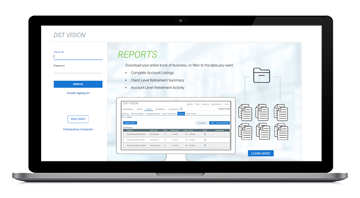Looking beyond the label: evaluating core and core-plus fixed income
Fixed-income investments often serve as the backbone of diversified portfolios, offering stability and income amid market uncertainty. Yet, for many investors, the terms core and core plus can be confusing, suggesting a uniformity that simply doesn’t exist. We explore three key questions investors should ask when evaluating fixed-income funds to ensure they’re getting a comprehensive, yet efficient, overview.

It’s tempting to assume that, as a category, core or core-plus fixed-income funds will behave in a predictable way. However, these categories are quite broad, and the funds within them can vary widely in terms of their philosophy, risk, and performance.
When evaluating fixed-income funds, it’s crucial to dig deeper to understand what you own, gaining a clearer picture of how your bond allocation might perform under various market conditions. Here are three key questions for investors to consider when evaluating core and core-plus fixed-income funds.
1 Is the manager’s approach top down or bottom up?
Investment managers typically approach fixed-income investing in one of two ways: top-down or bottom-up. Top-down managers focus on macroeconomic trends, adjusting portfolios based on factors such as interest rate forecasts and inflation expectations. In contrast, bottom-up managers concentrate on the fundamentals of individual issuers, seeking out companies or governments with strong balance sheets and solid payment histories.
Neither approach is better than the other, but a fundamental, bottom-up lens might offer greater stability and downside protection, particularly in volatile markets. This stability arises from the challenges of predicting factors like the direction of the fed funds rate, the 10-year U.S. Treasury yield, global macroeconomic events, and economic cycles, which can introduce additional risk. For instance, a top-down investment manager making a call on duration risks being on the wrong side of the trade, which can undermine any potential alpha gained from security selection.
In contrast, a bottom-up manager focuses on factors like the shape of the yield curve and addresses the fundamental question in bond investing: will this issuer be there to give me my money back and pay interest along the way? By emphasizing relatively stable metrics such as credit quality, this approach can lead to more consistent exposures over time, potentially enhancing the client experience over the long term.
2 What exposures are present, and how have they shifted over time?
It’s important to remember that the labels core and core plus don’t give investors the whole story. Funds within these categories can have vastly different risk profiles based on their asset exposures. Some may be heavily tilted toward corporate bonds, while others might focus on mortgage-backed securities or international debt. These exposures aren't static and can change significantly in response to market conditions.
Looking at sand charts of sector, credit quality, and geographical exposures can help investors learn how a fund’s exposures might shift over time and provide a more comprehensive evaluation of strategies in the core and core-plus fixed-income categories. By reviewing these sand charts, you can assess how a manager constructs the portfolio over time, rather than just looking at current allocations.
Some managers make gradual shifts to their asset allocation
Sector allocation (%)
Other managers might have significant and rapid changes to their allocation
Sector allocation (%)
Since the stability of portfolio exposures may differ widely between funds, understanding how a portfolio’s allocation might shift over time is critical to ensure that a strategy aligns with your expectations, avoiding unexpected changes down the road.
Portfolios that undergo dramatic shifts in exposure can experience increased volatility, potentially leading to unexpected performance outcomes. While there is no single right answer regarding exposures, regularly reviewing these details can help ensure your bond portfolio stays aligned with your broader investment strategy.
3 How does the manager's investment performance shape the client experience?
Understanding a manager’s investment approach, such as whether they use a top-down or bottom-up strategy, is key to knowing what you own. The next step is to evaluate the client experience.
Our industry has traditionally evaluated performance using trailing or annual returns. While these standardized performance evaluations are systematic in nature, clients invest in a nonsystematic way. Investors typically put money to work when they receive a paycheck, bonus, inheritance, or experience a liquidity event and they tend to withdraw funds for significant expenses such as buying a house, paying large credit card bills, or funding a vacation; often, these events don’t happen on January 1. In addition, outlier years like 2008 or 2020 can easily distort trailing returns, failing to reflect the client’s actual experience.
That’s where rolling return analysis, which looks at returns over overlapping multi-year periods, can be helpful. Rolling returns can offer a clearer view of a fund’s consistency and resilience, showing how a fund performs across different market cycles, rather than focusing on a single year's performance.
Rolling returns can provide insight into performance consistency
By analyzing rolling returns, investors can see not only how often a fund outperforms its benchmark but also the consistency and magnitude of that outperformance. This approach can help investors grasp the long-term trends that are more relevant to their actual investment experience.
It’s also important to consider whether a fund’s outperformance justifies the level of risk being taken by the management team. Examining rolling risk-adjusted measures, such as the Sharpe ratio, can add valuable context to performance evaluation.
Sharpe ratio provides a risk-adjusted view of rolling performance
The importance of periodic reviews
Core and core-plus fixed-income strategies are foundational to a multi-asset portfolio, but they’re far from uniform. By looking beyond labels, understanding manager philosophies, monitoring exposures, and evaluating performance through rolling returns analysis, investors can make more informed decisions that potentially result in better outcomes.
The best fixed-income strategy is one that aligns with your goals, risk tolerance, and time horizon. Investors should take the time to ask questions and periodically review their holdings as markets evolve. Investors can also consider working with a financial professional to conduct a fixed-income audit, reviewing exposures, performance, and how their funds complement one another.
This proactive approach can help investors avoid concentration risk, identify any overlap, and ensure their portfolio is positioned for both current conditions and future opportunities.
Curious how your fixed-income portfolio stacks up? Our Investment Consulting Group offers product-agnostic consultations to help you identify risks and opportunities, ensuring that your bond allocation is aligned with your investment goals.
Important disclosures
Important disclosures
This material is for informational purposes only and is not intended to be, nor shall it be interpreted or construed as, a recommendation or providing advice, impartial or otherwise. Manulife John Hancock Investments and our representatives and affiliates may receive compensation derived from the sale of and/or from any investment made in our products and services.
The opinions expressed are those of the author(s) and are subject to change as market and other conditions warrant. No forecasts are guaranteed. Past performance does not guarantee future results. This commentary is provided for informational purposes only and is not an endorsement of any security, mutual fund, sector, or index.
Investing involves risks, including the potential loss of principal. These products carry many individual risks, including some that are unique to each fund. Fixed-income investments are subject to interest-rate and credit risk; their value will normally decline as interest rates rise or if an issuer is unable or unwilling to make principal or interest payments. Investments in higher-yielding, lower-rated securities include a higher risk of default.
MF4979933






